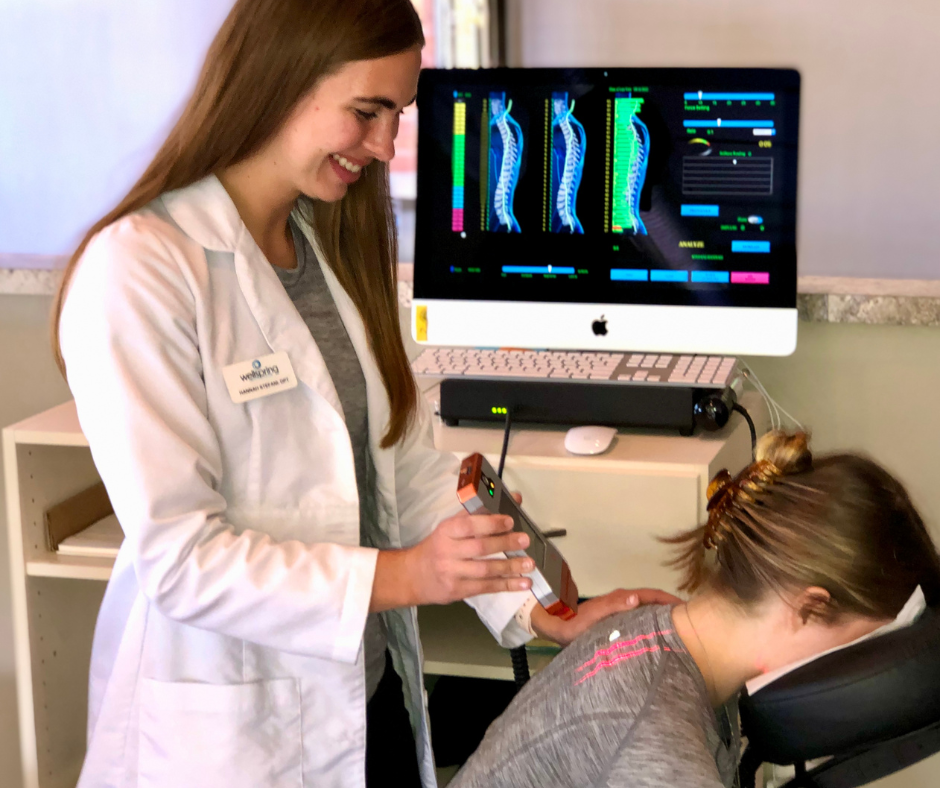Did You Know that the CDC recommends safer alternatives like physical therapy to manage pain?
No one wants to live in pain. But no one should put their health at risk in an effort to be pain free.
Doctor-prescribed opioids are appropriate in some cases, but they just mask the pain. And opioid risks include depression, overdose, and addiction, plus withdrawal symptoms when stopping use.
That’s why the CDC recommends safer alternatives like physical therapy to manage pain.
Physical therapists treat pain through movement, hands-on care, and patient education—and by increasing physical activity you can also reduce your risk of other chronic diseases.
Physical therapy can help you overcome your pain without drugs, making it a much safer choice.
How physical therapy can help you find effective and long-lasting relief
Pain medications don’t even address the source of your discomfort, seeking care from a physical therapist can help patients avoid or wean themselves off of opioids or other medications. (You may need medical supervision to reduce heavy opioid use safely.)
Integrative holistic physical therapists specialize in chronic pain treatment. They typically have special training in hands-on and hi-tech treatments that address the root causes of chronic pain. Here are just a few of the ways holistic physical therapy can replace pain medication:
- Chronic nerve pain can be controlled with holistic physical therapy techniques like myofascial release, joint mobilization, trigger point therapy, and active release technique (ART), which relieve pressure on nerves and calm pain signals. Cold laser therapy can also ease neuropathy symptoms and promote nerve healing.
- Chronic muscle spasms respond well to a holistic physical therapy approach that utilizes cold laser therapy, manual therapy, trigger point therapy, myofascial release, and active release technique (ART) in combination with massage therapy and posture strengthening movements like Pilates Matwork Therapy exercises.
- Chronic headache/migraine pain can be relieved through a combination of hands-on treatments like cervical spine joint mobilization, manual therapy, trigger point therapy, myofascial release, active release technique (ART), posture strengthening movements like Pilates Matwork Therapy, and lifestyle or dietary changes to help you avoid known headache or migraine triggers.
- Severe neck or back pain can be relieved through a combination of manual therapy, trigger point injections, myofascial release, active release technique (ART), posture strengthening movements like Pilates Matwork Therapy, cold laser.
- Arthritis pain responds well to holistic physical therapy by reducing stiffness, pain, and inflammation in the joints. A holistic physical therapist may use a combination of manual therapy, trigger point therapy, myofascial release, active release technique (ART), cold laser therapy, massage therapy, and whole-body movements like Pilates-based therapy that stretch and released restricted soft tissues.
The many perils of opioids
There’s no disputing the fact that pain medication is a profitable industry. In addition to the enormous sums spent by consumers on over-the-counter pain relievers, the worldwide market for opioid drugs has been estimated at $25.4 billion — and it’s expected to keep growing.
Opioids prevent pain signals from reaching the brain, enabling them to combat even the most severe pain. Unfortunately, the price of frequent opioid use far exceeds the money you pay for these drugs. The more you use opioids, the more likely your body is to develop a tolerance against them.
As a result, you need to keep taking more frequent and/or more potent doses to achieve the same degree of pain relief. This is a fast, potentially deadly path to addiction.
Don’t assume that you’re getting a good deal from non-addictive pain relievers, by the way. Milder drugs such as ibuprofen, aspirin, and acetaminophen may not get you “hooked,” but their painkilling effects are short-lived, forcing you to keep dosing yourself every few hours. And they don’t address the imbalances in the nerves and musculoskeletal system that harbor the root causes of pain.
Over-the-counter pain medicines can also cause health problems with frequent or heavy use, with risks ranging from stomach bleeding to liver failure.
Find pain relief with physical therapy today
Physical therapy can help you get a handle on your pain so that you don’t need pain medication. The American Physical Therapy Association (APTA) runs an annual campaign to raise awareness about choosing physical therapy first over opioids. The facts about addiction, overdose, and deaths from opioids for chronic pain management are astounding.
Physical Therapists are movement experts who identify, diagnose, and treat movement dysfunction. According to the American Physical Therapy Association (APTA), physical therapy has been proven to be as effective as surgery for many conditions, including meniscal tears and knee osteoarthritis, rotator cuff tears, spinal stenosis, and degenerative disc disease.
Here are just a few of the more holistic physical therapy techniques that can help conquer chronic pain:
- Manual Therapy. Manual therapy is a holistic approach that mobilizes and releases stiff joints, muscles, and soft tissues, increasing your range of motion. Our physical therapists have received extensive training in specialized manual therapy techniques, including myofascial release, joint mobilization, soft tissue massage, and active release technique (ART).
- Pilates Matwork Therapy. Unlike conventional physical therapy, which focuses on strengthening just the area of pain, a holistic physical therapy approach creates healthy coordinated movement through the whole body to reduce pain and support long-term recovery. For example, a common root cause of hip and knee pain is weak, tight core muscles. Pilates Matwork Therapy rehabilitates the core muscles that stabilize the pelvis, hips, and knees.
- Cold Laser Therapy. Cold Lasers AKA Low-Level Lasers are an amazing technology that significantly enhances the effects of physical therapy. Exercises and therapy procedures work at the level of the soft tissues and joints. Low-Level Lasers work at the cells’ level by increasing the energy that cells need to regenerate and heal and increase cells’ ability to communicate with each other.
- Electrical Muscle Stimulation. This modality can trigger an innate and completely natural analgesic effect by stimulating specific sensory nerve fibers (including A-beta, A-delta, and C fibers), which decrease the sensation of pain and release neurotransmitters that prolong the pain-relieving effects.
- Trigger Point Injections. Trigger point injections are proven effective for chronic pain management. Trigger points are hyper-irritable spots in tight bands of muscles and can often be felt as a tender knot. They can restrict movement, cause muscle weakness, and refer or radiate pain into other parts of the body. For example, at Wellspring Health Center in Eden Prairie, Mn, the sports medicine provider works as a team with the physical therapists to determine if you would benefit from trigger point injections.
Choose physical therapy first rather than opioids!
If you’re going to invest time, effort and money into feeling better, do it in a way that actually helps your body for safer long-term solutions.
No doctor’s referral is needed to schedule a visit with a physical therapist in Minnesota and most health insurance plans cover physical therapy.
If you’re interested in an integrative holistic physical therapy approach contact Wellspring Health Center to schedule a Free Consultation appointment and discover how you can live an active, pain-free lifestyle!
Tags: physical therapy, Cold Laser Therapy, Manual therapy, Wellspring Health Center, health and wellness, physical activity, physical therapist, fitness, physical fitness, Natural Pain Relief, Drug Free, Opioids, Pain Medicine, Health, Natural Treatment




